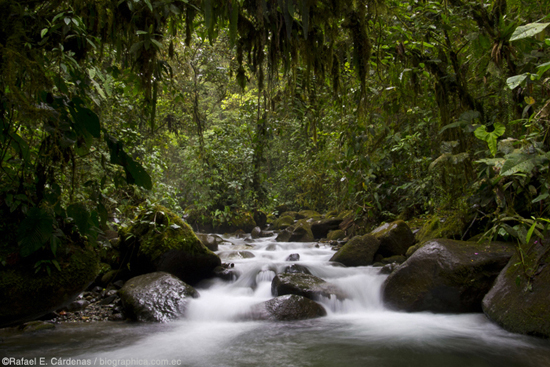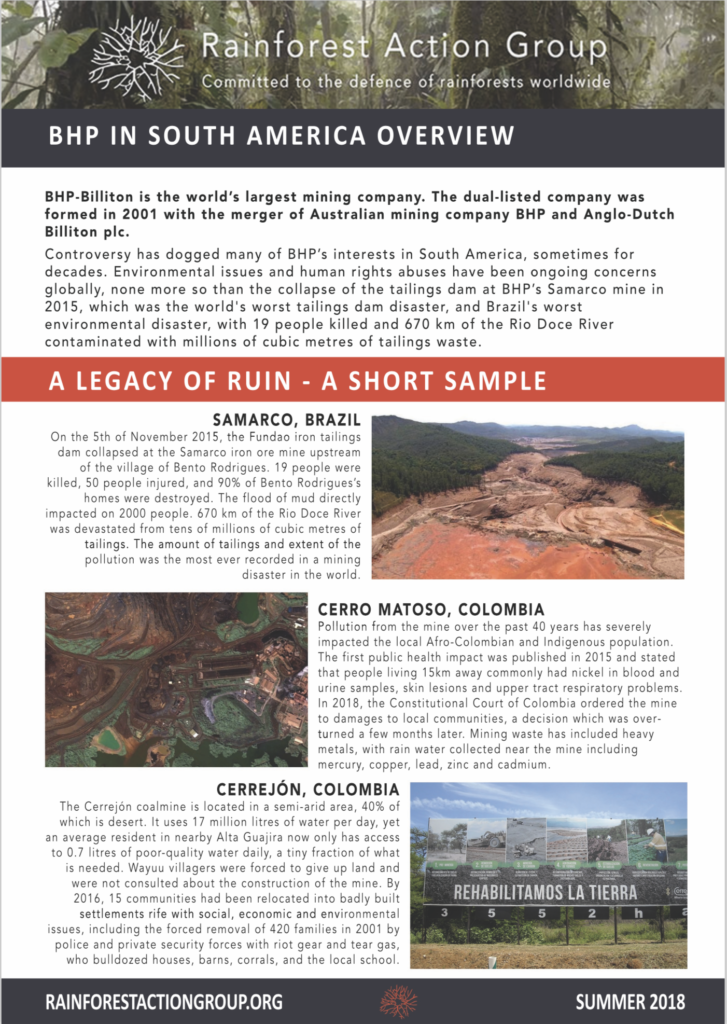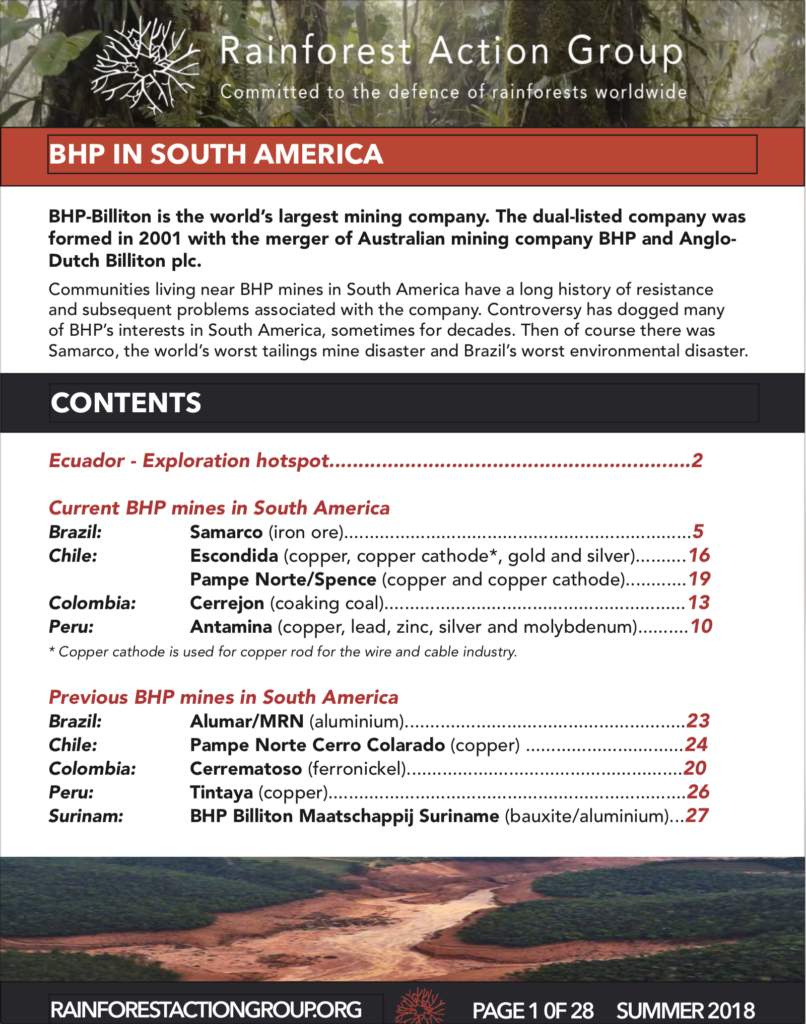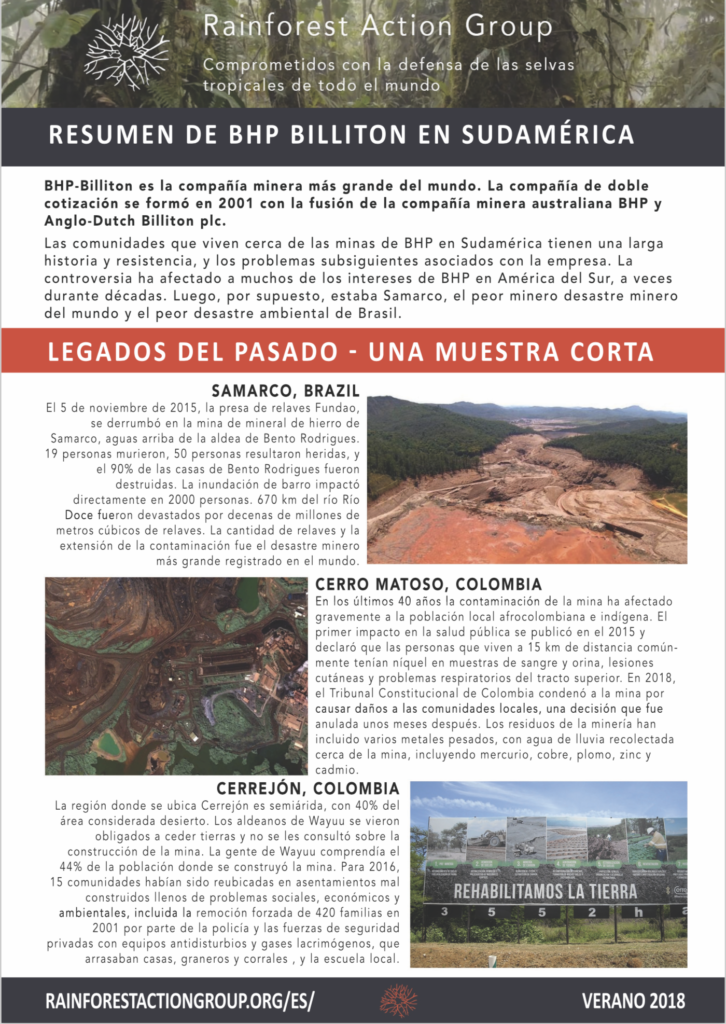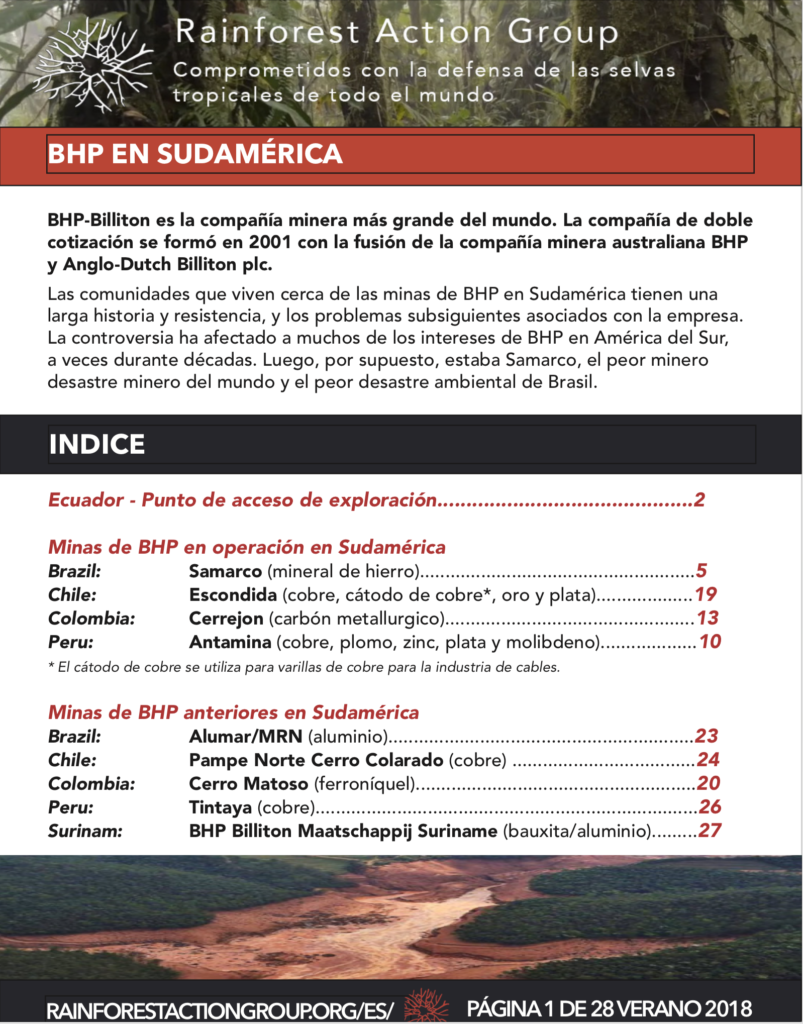Recent news
Win for Los Cedros Reserve could impact mining concessions across Ecuador
Intag says no to mining
Llurimagua mine in Ecuador could lose environmental license
BHP BILLITON IN SOUTH AMERICA
ECUADOR - EXPLORATION HOTSPOT
BHP Billiton has been active in Ecuador since at least 1999 when it had options to explore properties in the Rio Zamora valley in south-east Ecuador. In 2002, BHP transferred a number of properties to the Canadian company, Corriente in two joint-venture agreements, including Mirador. BHP retained a 2% net smelter interest.
BHP Billiton operates in Ecuador under the subsidiary “Cerro Quebrado S.A.”, opening an office in Ecuador in 2017 after the purchase of several concessions along the North-Andean Copper Belt. BHP strengthened its strategic position in October 2018 with a US$36 million investment in SolGold, bringing its stake in the company to 11.2%. BHP and Newcrest Mining are now both major shareholders in company SolGold, with Newcrest holding a 14.5% stake. With SolGold’s Cascabel mine mooted to be as big as Ecsondida in Chile, and rumours suggesting Newcrest and BHP are in a tussle to take over SolGold, BHP’s involvement in Ecuador is likely to be significant.
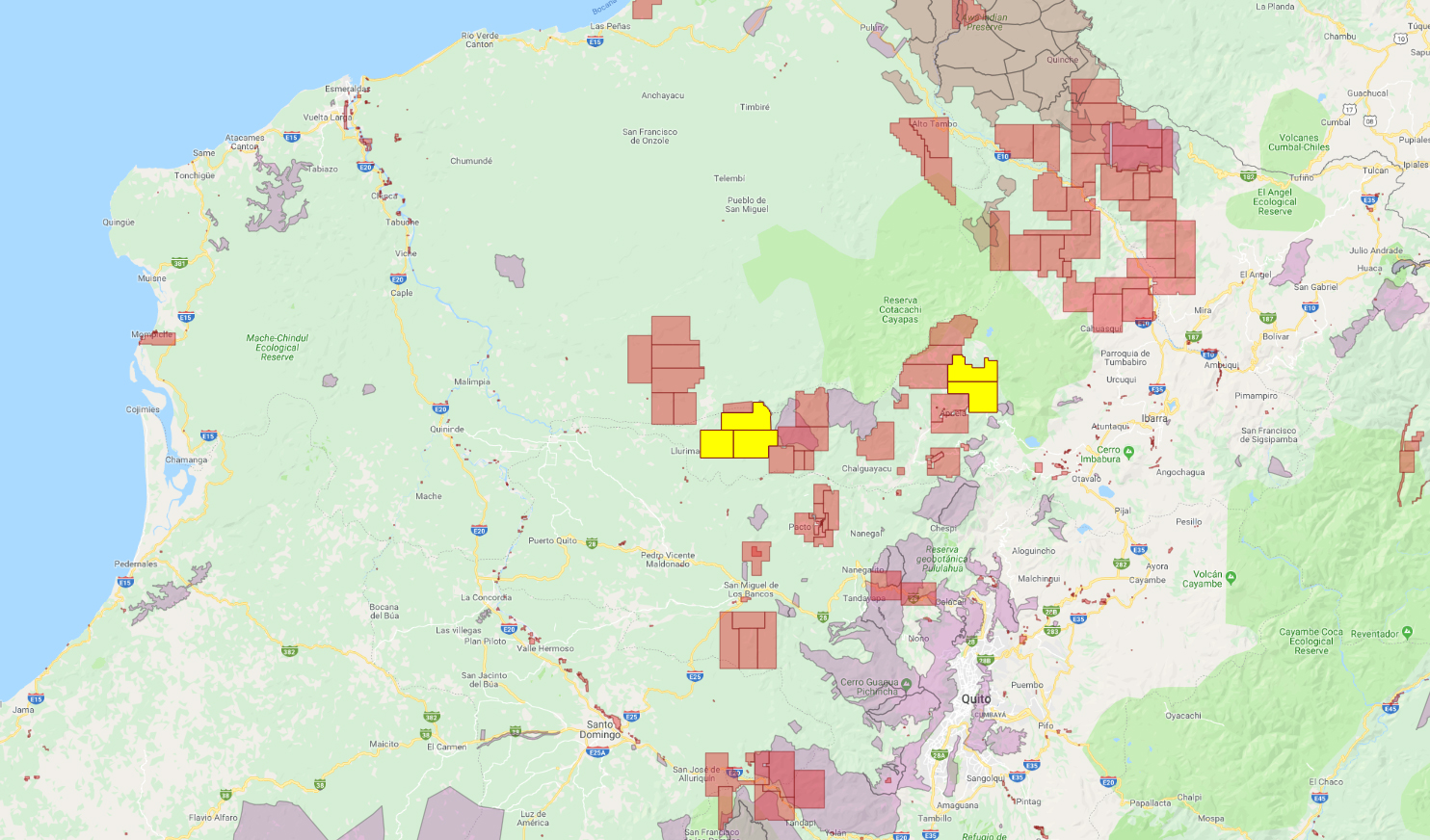
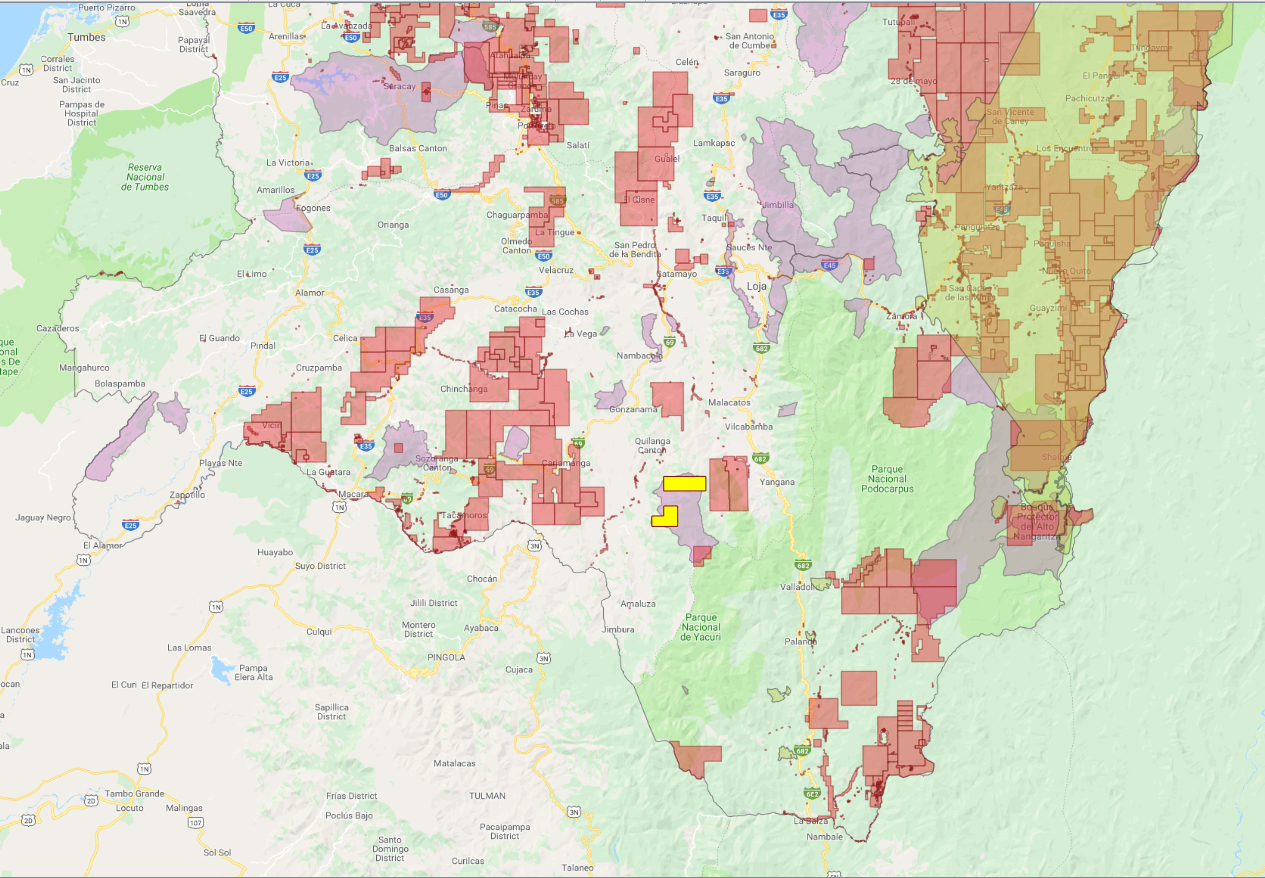
A LEGACY OF RUIN
SAMARCO DAM COLLAPSE, BRAZIL
ANTAMINA MINE, PERU
CERREJÓN, COLOMBIA
ESCONDIDA, CHILE
CERRO MATOSO, COLOMBIA
Reports
Informes (en Espanol)
BHP CONCESSIONS IN ECUADOR
|
SUBSIDIARY
|
CONCESSION ID
|
PROVINCE
|
CANTON
|
REGIME
|
AREA (HA)
|
|||
|---|---|---|---|---|---|---|---|---|
| CERRO QUEBRADO S.A | SANTA TERESA | IMBABURA | MIRA | GRAN MINERIA | 4325.95136 | KML | MAP | |
| CERRO QUEBRADO S.A | SABALETA 4 | IMBABURA | MIRA | GRAN MINERIA | 4001.953735 | MAP | ||
| CERRO QUEBRADO S.A | SABALETA 2 | IMBABURA | MIRA | GRAN MINERIA | 4390.949711 | |||
| CERRO QUEBRADO S.A | SABALETA 3 | IMBABURA | ESPEJO | GRAN MINERIA | 4918.943124 | |||
| CERRO QUEBRADO S.A | SANTA TERESA 2 | IMBABURA | SAN LORENZO | GRAN MINERIA | 4939.943801 | |||
| CERRO QUEBRADO S.A | BUEY | LOJA | SAN LORENZO | GRAN MINERIA | 1651.965143 | |||
| CERRO QUEBRADO S.A | SAN FRANCISCO | LOJA | SAN LORENZO | GRAN MINERIA | 2464.948306 | |||
| TOTAL (HA) | 26694.65518 |

